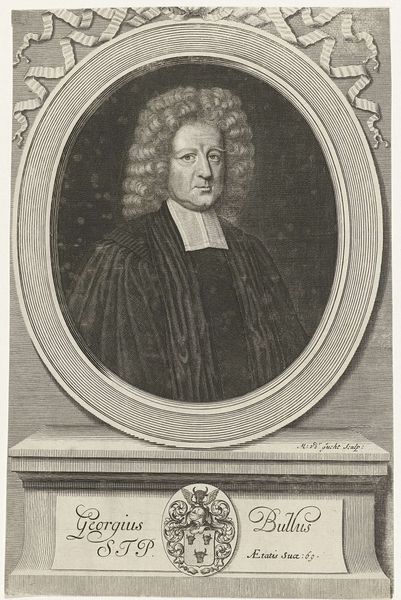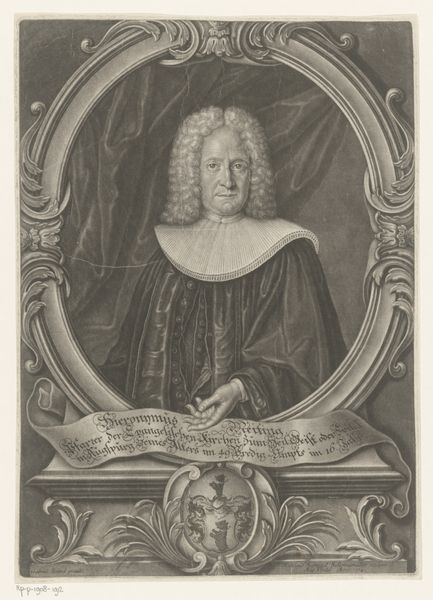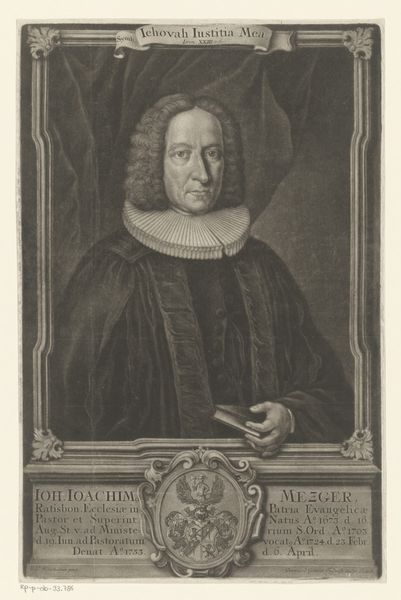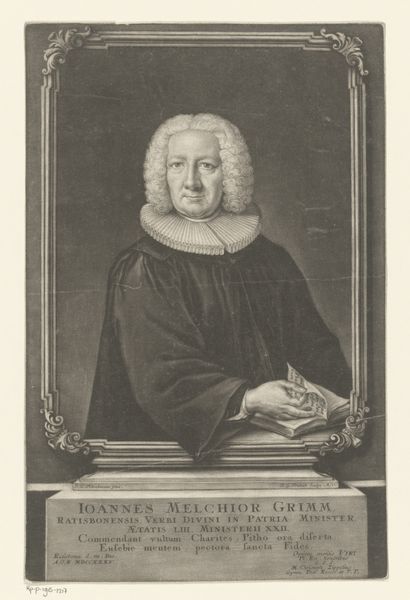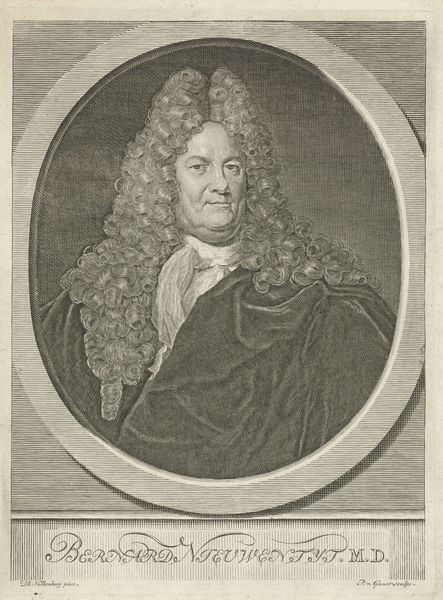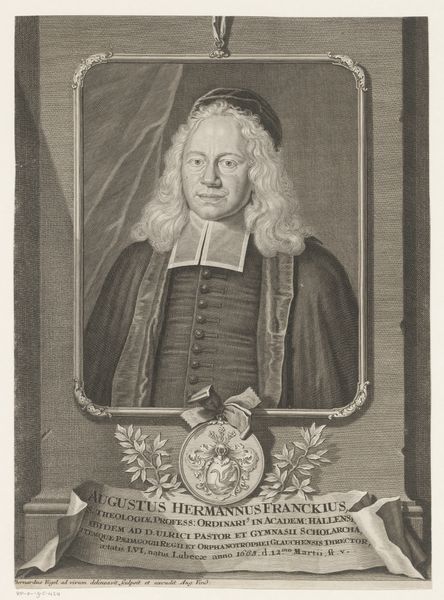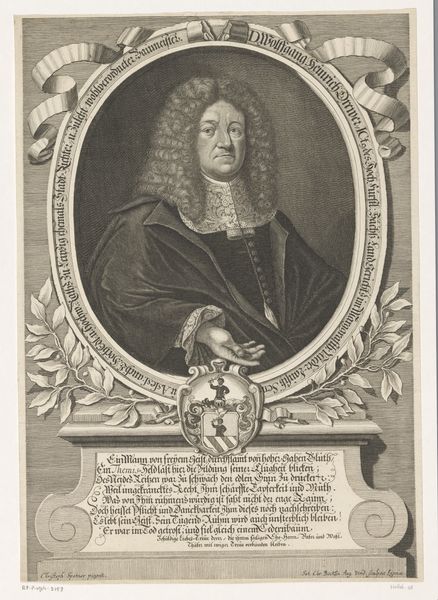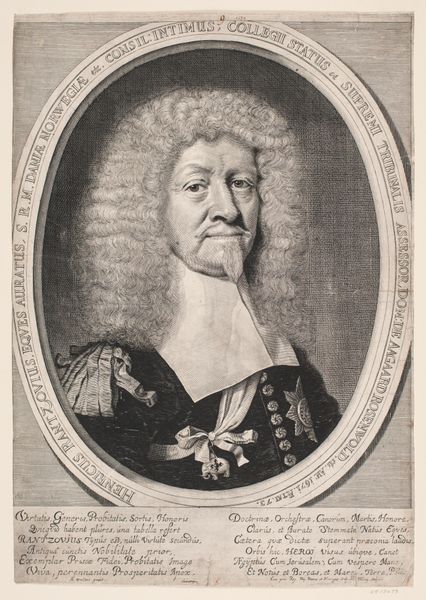
print, engraving
#
portrait
#
baroque
# print
#
engraving
Dimensions: height 307 mm, width 200 mm
Copyright: Rijks Museum: Open Domain
This print, made by Pieter van Gunst in 1695, portrays Wilhelm Caesar van Immesen. It's a masterful example of engraving, a process where lines are incised into a metal plate, which is then inked and printed. Notice how the intricate details of van Immesen's clothing and hair are rendered with meticulous precision. The engraver's skill is evident in the varying depths and widths of the lines, creating a sense of volume and texture. This wasn't just a mechanical process; it required a deep understanding of light, shadow, and form, honed through years of training. Engraving like this was a skilled trade, connecting artistry with a meticulous, labor-intensive process. Prints like this played a crucial role in disseminating images and ideas, acting as a form of visual communication in a pre-photographic age. Appreciating the craft involved helps us understand its cultural significance.
Comments
No comments
Be the first to comment and join the conversation on the ultimate creative platform.
